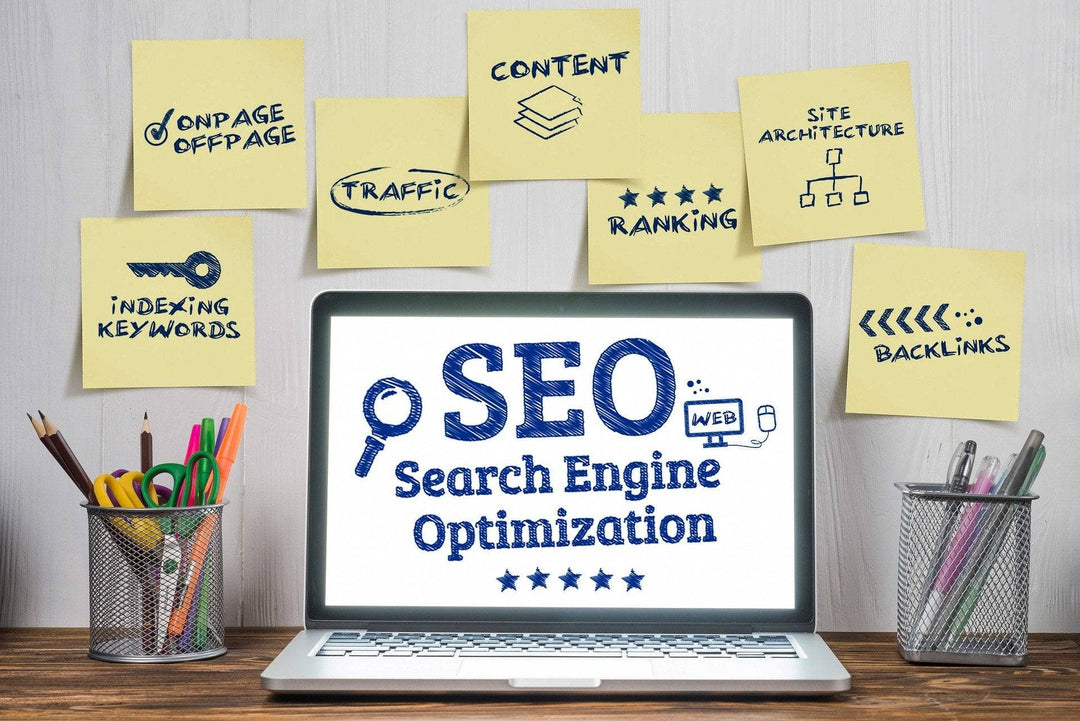Overview
This blog provides a comprehensive guide on optimizing your Shopify store for SEO, covering key topics such as understanding SEO basics, keyword research, on-page and off-page SEO, technical SEO, content creation, building backlinks, and monitoring SEO efforts. Implementing these strategies can significantly enhance your store's visibility and drive more organic traffic and sales.
Frequently Asked Questions
1. What is SEO and why is it important for my Shopify store?
2. How can I start optimizing my Shopify store for SEO?
3. What role do keywords play in SEO optimization?
4. How can I monitor the effectiveness of my SEO strategies?
5. What is the significance of backlinks in SEO?
In the competitive world of eCommerce, having a well-optimized Shopify store is essential for driving traffic and increasing sales. SEO optimization for online stores is not just a luxury; it’s a necessity. Whether you're just starting out or looking to enhance your existing store, mastering the art of SEO can significantly boost your online visibility. In this comprehensive guide, we'll explore actionable strategies to help you optimize your Shopify store for SEO and stand out in the crowded digital marketplace.
Understanding the Basics of SEO
SEO, or search engine optimization, refers to the techniques and practices that help improve your website’s visibility on search engines like Google. The goal is to rank higher in search results, thereby attracting more organic traffic to your eCommerce site. Here are a few basic concepts you should familiarize yourself with:
Keywords and Their Importance
Keywords are the phrases that potential customers use to find products or services online. By identifying and using relevant keywords, you can tailor your content to match what your target audience is searching for. For Shopify stores, keywords should be seamlessly integrated into product descriptions, blog posts, meta descriptions, and URLs.
On-page and Off-page SEO
On-page SEO involves optimizing individual web pages to improve their position in search rankings. Elements to consider include title tags, headings, content quality, and internal linking. On the other hand, off-page SEO refers to actions taken outside of your own site to impact your rankings, such as backlinks from reputable sources.
Getting Started with SEO Optimization for Your Shopify Store
Now that you understand the basic concepts of SEO, let’s dive into specific strategies for optimizing your Shopify store.
1. Keyword Research
Keyword research is the cornerstone of SEO optimization for online stores. Utilize tools like Google Keyword Planner, SEMrush, or Ahrefs to discover keywords that your potential customers are searching for. Focus on long-tail keywords that are less competitive and more specific, which often results in higher conversion rates.
2. Optimize Product Pages
Your product pages are the heart of your Shopify store, and optimizing them is crucial. Here’s how to do it:
- Include primary keywords in the product title, description, and meta tags.
- Write detailed, engaging product descriptions that incorporate keywords naturally.
- Add high-quality images and optimize their alt text with relevant keywords.
- Use user-generated content, such as reviews and ratings, to build trust and credibility.
3. Improve Site Structure
A well-structured site makes it easier for search engines to crawl and index your content. Consider the following:
- Use a clean and simple URL structure that includes relevant keywords.
- Create a logical hierarchy of pages—home page, category pages, and product pages.
- Implement breadcrumb navigation to improve user experience.
Content is King – Creating Engaging Blog Posts
Regularly updating your Shopify store with fresh content is a great way to improve SEO. Blogs can drive significant traffic and position your brand as a leader in your industry. Here’s how to create engaging content:
1. Choose Relevant Topics
Select blog topics that resonate with your target audience. These topics can include:
- How-to guides related to your products.
- Industry news and trends.
- Tips and tricks for getting the most out of your products.
2. Optimize Blog Posts for SEO
Similar to product pages, your blog posts should also be optimized:
- Include targeted keywords in your title, headings, and throughout the content.
- Utilize internal linking to guide readers to related products or posts.
- Encourage engagement by adding social sharing buttons.
3. Incorporate Multimedia
Enhance your blog posts by including images, videos, or infographics. Not only does this make your content more engaging, but multimedia elements can also increase dwell time on your site—an important factor for SEO.

Technical SEO for Shopify Stores
Technical SEO encompasses the behind-the-scenes aspects that contribute to your site’s performance. Paying attention to these elements can help improve your search rankings significantly.
1. Site Speed
Fast-loading websites enhance user experience and impact SEO rankings. Google considers page speed as a ranking factor, and it directly affects conversion rates. Here are some tips to improve your site speed:
- Compress images without losing quality.
- Minimize the use of heavy themes and apps.
- Utilize browser caching and CDNs (Content Delivery Networks).
2. Mobile Optimization
With the majority of online shopping done through mobile devices, ensuring your Shopify store is mobile-friendly is crucial. Use responsive design templates provided by Shopify to make sure your site looks beautiful and functions well on any device.
3. Secure Your Site with HTTPS
Security is another factor that plays a role in SEO. Google favors sites that are secure. If you haven’t already, ensure you have an SSL certificate installed to encrypt data and safeguard your customers’ information. This also improves trust, which can lead to greater sales.
Building Your Backlink Profile
Backlinks—links from external sites to your Shopify store—are one of the most important factors influencing your site's authority and search ranking. Here are some strategies to build high-quality backlinks:
1. Guest Blogging
Writing guest posts on reputable blogs in your niche can earn you backlinks and expose your brand to a new audience. Make sure that the content you provide is of high quality and relevant to the host's audience.
2. Collaborations and Partnerships
Collaborating with influencers or other brands can create opportunities for backlinks. Consider co-hosting webinars or giveaways, which can attract attention and backlinks from participating organizations.
3. Create Shareable Content
Unique, engaging content is more likely to be shared and linked back to. Focus on producing high-value content, such as infographics or case studies, that others in your industry will find valuable.
Monitoring Your SEO Efforts
After implementing your SEO strategies, it's essential to track the performance of your efforts. Monitoring will help you understand what’s working and what needs improvement.
1. Use Google Analytics
Google Analytics is a valuable tool that allows you to track essential metrics, including website traffic, bounce rates, and conversion rates. This data can provide insights into your audience's behavior and help refine your strategy.
2. Monitor Keyword Rankings
Keep track of your keyword rankings using tools like SEMrush or Ahrefs. Monitor the performance of your primary and long-tail keywords to identify any shifts in search engine results.
3. Analyze Competitors
Understanding your competitors’ approach to SEO can provide useful insights. Analyze their keyword usage, backlink strategy, and content performance. Use this information to tweak your own strategies for better results.
Let’s Boost Those Rankings!
In the ever-evolving landscape of eCommerce, optimizing your Shopify store for SEO is a journey, not a sprint. By implementing these strategies—ranging from keyword research and site structure to high-quality content creation and backlink building—you can enhance your store’s visibility and ultimately drive more sales. Remember, SEO is an ongoing process, and staying updated with the latest trends is vital for sustained growth. So, roll up your sleeves and start climbing to the top of the search engine results page!
Linked Product

eCommerce SEO
eCommerce SEO's Pro Plan offers a comprehensive solution for enhancing your Shopify store's visibility in search engine results. With services like initial keyword research, onsite optimization, and monthly reports, this plan helps you systematically improve your site's SEO performance. By addressing both the homepage and additional pages, you can effectively reach your target audience and drive more organic traffic to your store.
View Product





Leave a comment